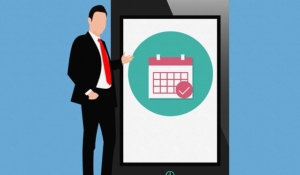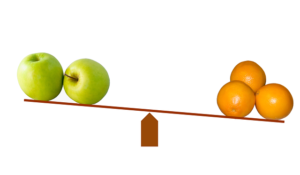This quarter’s report focuses on the technology industry’s evolution to ‘as a Service,’ profiling developments in key segments
June 2022
Authors: Bryan Belanger, Colin Naples
June 2022
Authors: Bryan Belanger, Colin Naples

“As a Service” pricing model adoption varies widely by technology sector, largely due to customer expectations. In markets such as professional services, HWaaS and Telecom as a Service, shifting to “as a Service” pricing requires a fundamental shift in customer mindset from predictable, capex-based purchasing to opex-based subscription and/or variable usage-based consumption and budgeting.
In these sectors, packaging models will evolve to SaaS-like constructs before pricing models. For example, productized services are emerging in professional services, and telecom operators are increasingly seeking term-based multiyear contracts that mirror subscriptions.
More mature “as a Service” sectors such as SaaS will evolve to the next frontier of “as a Service” monetization, which focuses on product-led growth (PLG). A core tenet of PLG is the deployment of usage-based pricing models, which will continue to be explored across “as a Service” through usage-based tiering and overage pricing strategies.
As less mature sectors seek to shift to “as a Service” models, they will increasingly look to other sectors for guidance on how to design packaging models and pricing models and how to set price and discount levels. For example, HWaaS vendors have set pricing strategies to align to the offerings of AWS, Microsoft Azure and Google Cloud. Professional services vendors that are launching software products are benchmarking their monetization strategies against leading SaaS players such as Salesforce and Workday.
|
Professional Services |
Telecom as a Service |
HWaaS |
IaaS/PaaS |
SaaS |
| • Productized services have proven successful in areas such as PC, storage, and server deployment and support services.
• This model will expand into new services segments such as consulting. • Large global SIs and consultancies will expand investments in true SaaS offerings to complement their services portfolios. |
• True SaaS models in telecom are minimal but will emerge.
• The primary motivator will be communications service provider standardization on chosen IaaS vendor. • SaaS models will be pay-as-you-go (PAYG) structures based on hyperscalers’ cloud marketplaces; this will become the primary go-to-market (GTM) route. |
• Mature offerings for “as a Service” have been established in STaaS and compute.
• These models will extend to other hardware areas at an accelerated rate. • PCaaS offerings will become increasingly common and standardized on public rate cards. |
• The IaaS sector pioneered usage-based pricing models.
• IaaS vendors will continue to broaden portfolios in key areas, as well as expand into other sectors. • For example, hyperscale IaaS providers are expected to continue acquiring telecom SaaS providers. |
• PLG will remain a primary strategic thrust for many SaaS vendors.
• A majority of SaaS vendors will experiment with usage-based pricing through usage-based tiering strategies and/or by introducing usage-based pricing via overage charges. |
|
Packaging Models |
Pricing Models |
Price Levels |
Discounting |
| • Tiered packaging models will be used across all XaaS sectors.
• Best practice is a variant of the “good-better-best” model, with each tier providing additional features and usage. • Many companies have a free tier, enterprise tier and two to three self-service tiers. • This general structure will work across industries but will be adapted to the use case. • For example, professional services firms are likely to minimize use of self-service, and telecom SaaS vendors may offer tiered packages but will sell many complementary add-on features and services. |
• Fixed-term subscriptions will be the most common structure across segments.
• Many segments moving into “as a Service” will opt for annual term minimums. • Actual pricing models will vary widely across segments. • SaaS, HWaaS and Telecom as a Service sectors are likely to continue to shift to usage-based tiered subscriptions and/or subscription models tied to clear value metrics. • The professional services sector is likely to focus on fixed subscription models, where a recurring flat-fee price is charged for a set scope. |
• Price points will largely be derivative of target segments.
• HWaaS will be offered at competitive price points to public cloud IaaS offers. • SaaS pricing varies widely by category and customer served. • Telecom as a Service is enterprise-focused, and thus deal values will exceed the six-figure to multimillion dollar mark. Rare cards are used, but pricing negotiations will focus primarily on total contract value ROI, not price points. • Professional services company “as a Service” offerings will follow similar strategies to the Telecom as a Service sector. |
• SaaS, IaaS, PaaS and HWaaS have standardized on incentivized pricing for term commitments and volume pricing.
• Telecom as a Service and professional services will remain negotiation-driven industries given the target customers and the price points. Discounting will be a function of individual customer negotiations. • All industries will use discretionary discounting selectively, but SaaS companies will increasingly limit discounting as their pricing strategies mature. |
 ©2022 XaaS Pricing. All rights reserved. Terms of Service | Website Maintained by Tidal Media Group
©2022 XaaS Pricing. All rights reserved. Terms of Service | Website Maintained by Tidal Media Group

 How to compare companies with different SaaS pricing strategies
How to compare companies with different SaaS pricing strategies